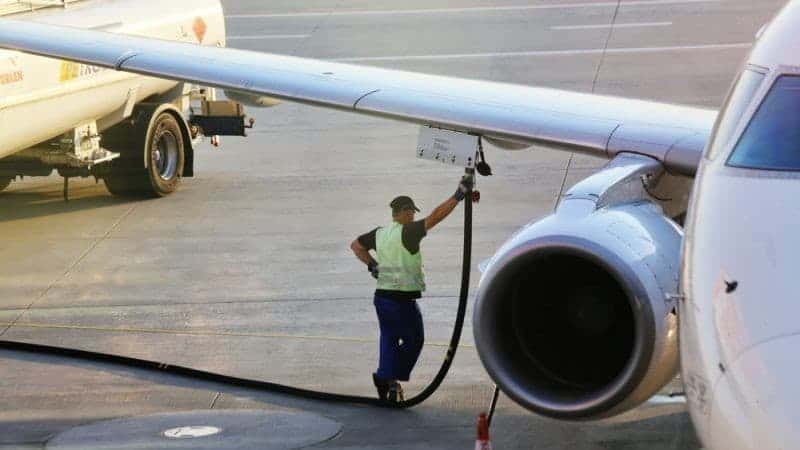
Global jet fuel demand is slowly recovering from last year’s collapse. The number of commercial flights has more than doubled since April 2020 and even tripled on some days in major domestic markets such as the United States.
Yet, the recovery of aviation fuel demand is expected to be the slowest among all fuels, and a return to pre-pandemic levels is unlikely at least until 2023, analysts say.
Recent weeks have seen an uptick in global airline passenger numbers, pointing to an improvement in jet fuel demand—very slow, but an improvement nevertheless.
This recovery, however, may not be a smooth take-off, with the airline industry and the global aviation fuel demand facing both short-term and long-term challenges. In the short term, jet fuel prices are surging because of higher oil prices and economic growth, creating a higher cost burden on airlines that have been bleeding cash for more than a year. In the long term, net-zero emission targets and flight shaming are set to increase airline commitments to use sustainable aviation fuel (SAF). These greener commitments could dent demand for oil-derived jet fuel.
Recovery Has Started, But It’s Slow
“Jet fuel demand numbers are starting to improve and show signs of life, allowing refiners to drop less jet into diesel which will eventually provide well-needed relief on distillate stock,” Joe Israel, CEO at U.S. refiner Par Pacific, told Reuters earlier this month.
The U.S. Transportation Security Administration (TSA) has been screening more than 1 million passengers at American airports every day since the middle of March. Traveler throughput, although half of what it was in 2019, is ten times higher than it was in March and April 2020, when flights were grounded and stay-at-home orders were in place.
The number of flights in the United States is now nearly triple the number seen at this time last year, according to data from global flight tracking service Flightradar24. Globally, the number of flights is also more than double compared to last year.
March 2021 saw a recovery in the number of global commercial flights, Flightradar24 says, although it noted that commercial traffic was still down by 31.5 percent compared to pre-pandemic levels. The number of commercial flights last month beat the Christmas 2020 record for airline travel since the pandemic started.
In China, air traffic recovery has resumed after the Chinese New Year holiday, and traffic from the country’s 25 busiest airports has practically recovered to pre-pandemic levels and 133 percent above where it was at the beginning of April last year, Flightradar24 estimates.
Progress in vaccinations and reopening international holiday destinations for vaccinated tourists this summer is expected to further boost airline passenger traffic—and with it, jet fuel demand.
Airlines, however, will continue to face difficulties, especially in terms of costs. Most cost-cutting measures were taken last year, with thousands of lay-offs in the industry globally. But one cost item cannot be avoided—the price of jet fuel.
Jet Fuel Prices Are Soaring
The rally in oil prices and the stronger global economy pulling all energy prices higher will be a key cost challenge for the airline industry this year, the International Air Transport Association (IATA) said in its April outlook.
Domestic passenger traffic is expected to perform significantly better than international markets, thanks to strong economic growth, accumulated consumer disposable cash during lockdowns, pent-up demand, and the absence of domestic travel restrictions. IATA estimates that domestic markets could recover to 96 percent of pre-crisis levels in the second half of 2021. That would be a 48-percent improvement on 2020.
Costs, however, remain a challenge for airlines trying to stop their cash burn in 2021. Currently, IATA expects much higher fuel prices, with jet fuel prices averaging $68.90 per barrel this year, up from $49.50 a barrel in 2020.
Airline capacity is expected to return at a slower pace than traffic, “as high levels of debt and rising fuel prices force airlines to fly only services expected to cover the cash costs of the operations,” IATA noted, suggesting that carriers will not rush to add or resume flights on some money-losing routes.
Sustainable Aviation Fuel Could Dent Long-Term Kerosene Demand
While the airline industry was fighting for survival during the crisis, emissions reduction and sustainability became even more mainstream than before the pandemic. Airlines have started to pledge to use more SAF, which in the long term could replace part of the global oil demand going to jet fuel production. Aviation fuel demand accounted for 8-9 percent of total oil demand globally in 2019.
The current use of SAF is still negligible. Still, the zero-emission drive is not going anywhere and could affect kerosene demand sooner rather than later.
Delta, for example, has a medium-term goal to replace 10 percent of its jet fuel refined from fossil fuel with SAF by the end of 2030.
United Airlines said earlier this month that it would work with more than a dozen leading corporations to collectively contribute towards the purchase of approximately 3.4 million gallons of SAF this year. This is just a fraction of the over 4 billion gallons of jet fuel United used in 2019. Nevertheless, it is a step toward SAF.
Liquid fuel such as SAF is currently the only viable option for the industry to cut emissions, considering that no electric commercial passenger aircraft has been manufactured yet. SAF can reduce lifecycle CO2 emissions by some 80 percent, a figure which is expected to rise significantly in the coming years, IATA says. The association also disputes reports that SAF would be competing against food crops or precious water resources, or would potentially cause deforestation.
“Research has shown there is enough feedstock available even under the very strict sustainability criteria of what can be used as feedstock,” said Michael Gill, Director of Aviation Environment at IATA.























